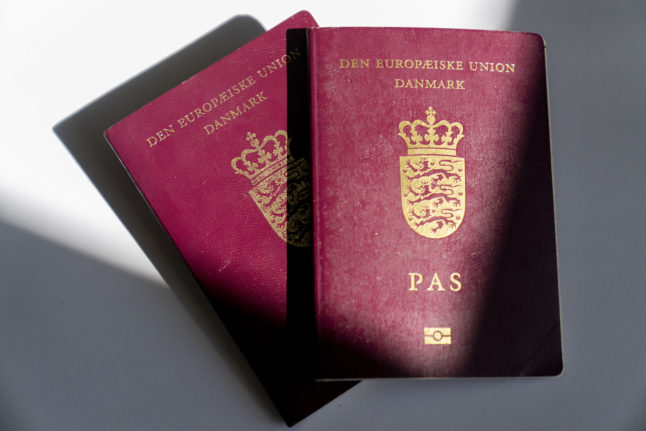When a child has a Danish parent, they are automatically given Danish citizenship at birth, wherever in the world they are born.
There are some exceptions for people born before July 1st 2014. These are dependent on the legislation at the time, such as which parent is Danish and whether the parents married before the child turned 18. There is more information about that here.
For example, children born in marriage to a Danish mother and a foreign father between January 1st 1961 and December 31st 1978, did not obtain Danish nationality by birth so their mothers had to register their child for citizenship. If this didn’t happen, it’s possible to apply for Danish nationality by naturalisation according to the “Princess Rule”.
If the child gets automatic citizenship outside of Denmark, they have until the age of 22 of retain it and then they automatically lose it.
READ ALSO:
- EU Court says Denmark can strip citizenship of adults born and raised abroad
- Danish-born non-citizens call for change to country’s citizenship rules
How to retain Danish citizenship when born outside of Denmark: The 22-year rule
You retain your citizenship if:
- Losing it would make you stateless.
- You have lived in another Nordic country for at least seven years before the age of 22.
- You can show a strong connection to Denmark by residing in the country for a total of at least one year before reaching the age of 22. This can be in the form of a year’s stay, or short-term visits that add up to a year. For the latter, other circumstances will be taken into consideration, such as a personal connection to Denmark. Living in the country is defined as at least three consecutive months of residence, including having a personal registration (CPR) number and residential address.
This information needs to be documented before the age of 22 in order to keep Danish citizenship. The application can be submitted to a Danish embassy or consulate abroad or directly to the Ministry of Immigration and Integration.
Dispensations before the age of 22
If you have not retained your citizenship by living in Denmark before the age of 22, you can still apply to keep it before you reach this age.
For this, you need to submit this application form, which considers the the number of times and lengths of visits you have had to Denmark before the age of 22, at what age you were when you visited (for example more visits closer to 22 suggests the connection is of your own initiative); your proficiency in the Danish language; and your connection to Denmark, for example through contact with Danish relatives or through Danish associations.
On the application form, you need three Danish residents to confirm your visits to Denmark and your proficiency in the Danish language before you turned 22.
READ ALSO: Do children born in Denmark automatically get Danish citizenship?
After the age of 22
The Ministry of Immigration and Integration states that the dispensations are only for people applying before the age of 22. However they do accept later applications, which are assessed on an individual basis and based on the person’s relationship to Denmark before the age of 22, not after. The application form is the same as applying before the age of 22.
If you do not fulfil the requirements on the form, such as multiple visits to Denmark, language competency and connection to the country, you will lose your Danish citizenship aged 22.
When should I submit the application?
The assessment is to retain Danish citizenship, not prove it. So the application has to be made between the age of 21 and 22. An application submitted before the age of 21 is considered to be an application for proof of Danish citizenship, which is something different. An application after the age of 22 is less likely to be approved.
How long does the application take?
The processing time is between 13 and 15 months (2023) from the time the application is received at the Ministry of Immigration and Integration. It costs 1,200 kroner.
READ ALSO: How to apply for citizenship in Denmark
Why is this citizenship legislation in the news?
A case has been brought to the EU Court of Justice concerning the daughter of a Danish mother and an American father who has held, since her birth in the United States, Danish and American citizenship. After reaching the age of 22, she applied to retain Danish nationality, but the national authorities told her that she had lost it when she turned 22.
The applicant started legal action calling for the annulment of the decision. The case is now pending at the High Court of Eastern Denmark (Østre Landsret), which asked the EU Court whether such decision is compatible with EU law.
The EU Court ruled that Denmark is in principle entitled to decide that its nationals born abroad who have never lived on its territory lose Danish nationality at the age of 22. However, that measure must “have due regard to the principle of proportionality when it also entails the loss of European citizenship”.
“EU law precludes the permanent loss of Danish nationality and therefore of European citizenship without the person concerned having been notified or informed of this, or having had the opportunity to request an individual examination of the consequences of that loss,” the EU Court said.
For Danish legislation to be compatible with EU law, the person concerned “must be given the opportunity to lodge, within a reasonable period, an application for the retroactive retention or recovery of the nationality”.
The Danish Court will have to consider the EU verdict in its final ruling.



 Please whitelist us to continue reading.
Please whitelist us to continue reading.
Member comments